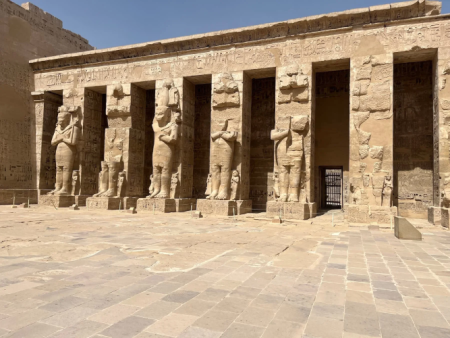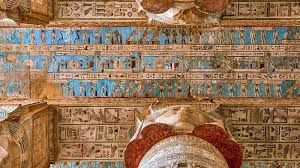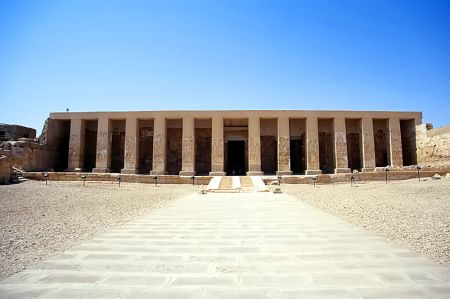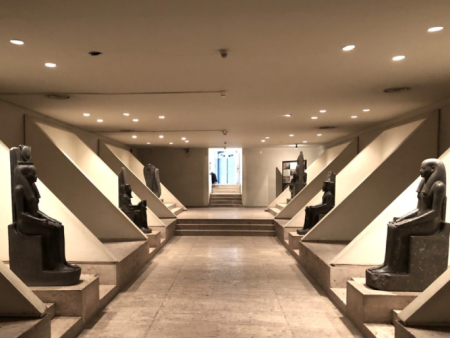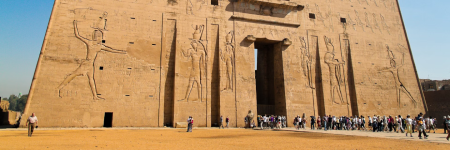The Valley of the Kings

The Valley of the Kings: Egypt’s Eternal Royal Necropolis
Hidden amid the rugged cliffs on Luxor’s west bank lies the legendary Valley of the Kings, a silent yet powerful testament to ancient Egypt’s grandeur and belief in the afterlife. This sprawling necropolis, carved deep into the Theban hills, was the final resting place of Egypt’s mightiest pharaohs from the 18th to the 20th Dynasties. Unlike the pyramids of Giza, these subterranean tombs were intentionally concealed to protect the royal mummies and treasures from grave robbers. Today, the Valley of the Kings remains one of the most remarkable archaeological sites on Earth—an open book of ancient Egyptian religion, art, and funerary practices.
Every corner of this sacred valley whispers stories of kings who ruled the land of the Nile with divine authority. Walking through its narrow pathways, visitors encounter more than 60 tombs, each bearing unique hieroglyphs, vivid paintings, and spellbinding architecture. The discovery of Tutankhamun’s tomb in 1922 by Howard Carter immortalized this valley’s fame, unveiling a treasure trove that stunned the modern world. Yet, beyond the golden mask and glittering relics, the Valley of the Kings symbolizes a civilization’s unrelenting quest for immortality. For those exploring ancient Egyptian wonders, this site forms an essential highlight of any Egypt Travel Package, drawing thousands of historians, archaeologists, and tourists who crave to witness the pharaonic afterlife journey firsthand.
The Historical Significance of the Valley of the Kings
The story of the Valley of the Kings begins around 1550 BCE, when Egypt’s New Kingdom pharaohs sought a more secure and sacred burial ground. Abandoning pyramid construction due to frequent tomb robberies, they turned to the Theban cliffs—a site close to the temples of Karnak and Luxor Temple. This strategic move marked a major shift in royal burial customs. The valley’s secluded location, surrounded by natural hills resembling a pyramid, made it ideal for concealing tombs from intruders. The necropolis became the resting ground for some of Egypt’s most powerful rulers, including Seti I, Ramses II, and the boy king Tutankhamun.
The valley’s name in ancient times, “Ta-sekhet-ma’at,” meaning “The Great Field,” reflected its divine purpose—a place of eternal harmony where kings hoped to reunite with the sun god Ra and the god of the underworld, Osiris. The tombs were meticulously decorated with texts from the “Book of the Dead,” “Book of Gates,” and “Amduat,” each serving as a celestial guide for the deceased pharaoh’s journey through the afterlife. Such intricate details make the Valley of the Kings a living manuscript of Egypt’s spiritual worldview.
Architectural Marvels and Tomb Designs
Each tomb within the Valley of the Kings is a masterpiece of architecture and symbolism. Unlike the symmetrical pyramids, these tombs were cut directly into limestone, featuring long corridors, descending stairways, and chambers filled with sacred art. The decorations depicted the pharaoh’s divine transformation, celestial maps, and encounters with gods and spirits. Among the most famous tombs are KV17 (Seti I), KV62 (Tutankhamun), and KV9 (Ramses VI), all celebrated for their vibrant murals and symbolic alignment with celestial events.
The tomb of Ramses VI, for instance, is a visual wonder with ceilings painted to represent the sky goddess Nut arching over the earth, embodying the king’s rebirth each dawn. Visitors marvel at these preserved colors, which despite millennia of exposure, still radiate with extraordinary brilliance. Those eager to explore Egyptian craftsmanship often combine a visit to this necropolis with a trip to the Temple of Hatshepsut and Colossi of Memnon, creating a journey through ancient architectural splendor.
Tutankhamun’s Tomb: The Discovery That Changed Egyptology
No tale of the Valley of the Kings is complete without the remarkable discovery of Tutankhamun’s tomb. In 1922, British archaeologist Howard Carter uncovered KV62, a hidden chamber untouched by thieves for over 3,000 years. Inside, he found over 5,000 artifacts, including the young king’s golden funerary mask, chariots, jewelry, and weapons. This treasure illuminated the craftsmanship, artistry, and beliefs of the 18th Dynasty. Tutankhamun’s tomb remains the only nearly intact royal burial ever found in the valley, making it a cornerstone of modern Egyptology and a global symbol of ancient Egyptian civilization.
The discovery drew attention to the significance of preservation and inspired numerous studies and exhibitions worldwide. Many of these artifacts now reside in The Grand Egyptian Museum and The Egyptian Museum of Cairo, where visitors can admire the legacy of this timeless pharaoh.
Daily Life and Work in the Valley of the Kings
Behind the grandeur of these tombs stood a community of skilled workers who lived in the nearby village of Deir el-Medina. These artisans, painters, and stonecutters dedicated their lives to crafting the king’s eternal dwelling. Their precise work required secrecy and loyalty, as they were entrusted with the pharaoh’s afterlife. Archaeological findings reveal their daily lives, tools, and even graffiti that shed light on the social fabric of ancient Egypt. The workers followed strict rituals and often invoked deities like Ptah and Thoth for protection and inspiration.
For travelers retracing these ancient footsteps, combining a visit to the Valley of the Kings with Egypt Nile Cruises offers a once-in-a-lifetime experience, letting one glide along the same river that once carried stones, statues, and royal funerary goods downstream to Thebes.
Symbolism and Religious Significance
The Valley of the Kings wasn’t merely a burial site—it was a sacred cosmic map. Every tomb design, wall carving, and artifact spoke of Egypt’s obsession with death and rebirth. The pharaoh’s journey mirrored the sun’s daily voyage across the sky and its descent into the underworld at dusk. Tomb paintings depicted divine boats carrying the king through 12 gates of night before his resurrection at dawn. The valley’s westward orientation represented the land of the setting sun, a metaphor for the soul’s passage to eternity.
Symbols like the scarab beetle, ankh, and the Eye of Horus appeared frequently across the tombs, each representing protection and regeneration. The integration of these symbols with passages from the “Book of the Dead” created a spiritual tapestry that guided the deceased through trials and into everlasting life.
Modern Excavations and Ongoing Discoveries
Though extensively studied, the Valley of the Kings continues to surprise archaeologists with new discoveries. Advanced technologies like 3D mapping, radar scanning, and photogrammetry have revealed unexplored chambers and hidden corridors. Recent findings have unearthed artifacts, tools, and fragments of tombs that may belong to undiscovered royals. Egypt’s Ministry of Tourism and Antiquities, supported by international teams, continues to preserve and protect this UNESCO World Heritage Site from natural erosion and tourism pressure.
The valley’s preservation plays an essential role in Egypt’s cultural heritage and tourism economy. For those fascinated by archaeology, visiting the Valley of the Kings alongside Karnak Temple or Valley of the Queens provides a holistic view of Luxor’s ancient splendor.
Tips for Visiting the Valley of the Kings
Travelers planning to visit the Valley of the Kings should arrive early in the morning to avoid the midday heat. The site opens daily, and entry tickets allow access to a select number of tombs, while others like Tutankhamun’s require additional fees. Photography inside tombs is regulated to preserve the delicate pigments. Lightweight clothing, hats, and water are essential for comfort. Hiring a knowledgeable guide enhances the experience, as they provide insights into tomb symbolism, dynastic history, and recent archaeological work. Many visitors prefer to include the Valley of the Kings in comprehensive Egypt Vacation Packages that combine cultural exploration with relaxation along The Nile River.
FAQs about the Valley of the Kings
How many tombs are in the Valley of the Kings?
There are over 60 known tombs, varying in size and complexity. Some belong to pharaohs, while others belong to nobles and high priests. New excavation efforts suggest more undiscovered tombs may still lie hidden beneath the desert floor.
What is the best time to visit the Valley of the Kings?
The ideal time is from October to April, when temperatures are cooler. During these months, exploring the tombs is more comfortable, and the natural lighting enhances the view of intricate carvings and paintings.
Which tombs should I visit in the Valley of the Kings?
Top recommendations include the tombs of Ramses VI, Seti I, and Tutankhamun. The latter remains the most famous due to its treasures. Each tomb offers a distinctive artistic and historical experience, showcasing the evolution of funerary art across dynasties.
Is the Valley of the Kings accessible to all travelers?
Yes, but due to uneven terrain, some tombs may be challenging for visitors with limited mobility. The site continues improving accessibility with pathways and shuttles. Guided tours often adjust itineraries for all types of travelers.
Why is the Valley of the Kings important to world heritage?
It’s not just a royal burial ground—it’s a masterpiece of human civilization. The Valley of the Kings encapsulates ancient Egypt’s religious beliefs, engineering prowess, and artistic genius. Recognized by UNESCO, it serves as a timeless educational and cultural beacon for the entire world.





